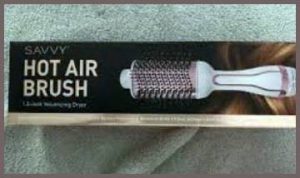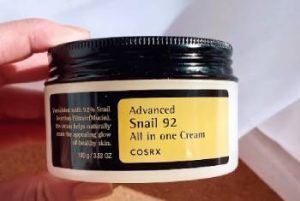If you’re trying to conceive or understand your cycle, Inito, Mira, and Kegg are top fertility trackers worth exploring.
I tested each to share my experience, breaking down their features, pros, cons, and accuracy.
This article compares these devices to help you pick the best one for your journey.
Whether you want hormone data or a budget-friendly option, you’ll find clarity here.
Read on to discover which tracker suits your needs and boosts your fertility goals!
Comparison Table: Inito Vs. Mira Vs. Kegg
| Feature/Device | Inito | Mira | Kegg |
| Tracking Method | Urine-based hormone tests | Urine-based hormone tests | Cervical mucus impedance |
| Hormones Tracked | LH, E3G, PdG, FSH | LH, E3G, PdG (FSH optional) | None (cervical fluid) |
| Accuracy Claim | High, no specific % | 99% for LH/E3G/PdG | No specific %; 12-month pregnancy guarantee |
| Initial Cost | $149 (15 strips) | $199 (10 wands) | $279 (one-time) |
| Ongoing Cost | $49/15 strips | $64.99/20 wands | None |
| App Compatibility | iPhone only | iOS/Android | iOS/Android |
| Test Time | 10 minutes | 16-21 minutes | 2 minutes |
| Key Feature | Measures 4 hormones on one strip | Lab-grade AI analysis | Kegel exercise support |
| Best For | Irregular cycles, PCOS | Detailed hormone tracking | Budget-conscious, regular cycles |
My Experience with Inito, Mira, and Kegg
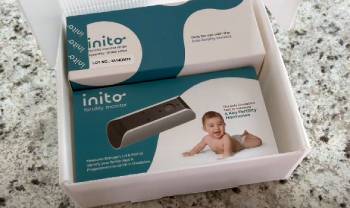
I’ve been navigating Jimmying to conceive for over a year, and after struggling with irregular cycles and PCOS, I decided to try fertility trackers to pinpoint my fertile window.
I tested Inito, Mira, and Kegg, each offering unique ways to track ovulation.
Inito came first—a sleek device that clips onto my iPhone, testing urine for four hormones: luteinizing hormone (LH), estrone-3-glucuronide (E3G), pregnanediol glucuronide (PdG), and follicle-stimulating hormone (FSH).
I collected first-morning urine, dipped a test strip for 15 seconds, and slid it into the Inito clip.
Ten minutes later, the app showed clear charts with actual hormone values, not just “High” or “Low.”
My cycle, typically 30-35 days, showed an LH surge on day 17, with PdG confirming ovulation two days later.
The data helped me time intercourse precisely, and I conceived in my second cycle.
The app’s user-friendly interface and detailed hormone curves were a game-changer, though I needed 15 strips per cycle, which added up.
Mira was next, a palm-sized analyzer with a premium feel.
I used its “Plus Wands” to track LH and E3G, and “Confirm Wands” for PdG, with optional FSH wands.
After dipping a wand in urine for 10 seconds, I inserted it into the analyzer, waiting 16-21 minutes for results.
The Mira app’s AI-driven charts showed my estrogen rising three days before my LH peak at 45 mIU/mL, giving me a clear fertile window.
It synced via Bluetooth, and I loved sharing detailed hormone data with my doctor.
The wands’ cost stung, but the lab-grade accuracy felt worth it for my irregular cycles.
Kegg took a different approach, using a vaginal device to measure cervical mucus changes.
Each morning, I inserted the egg-shaped device for two minutes during a consistent two-hour window.
It buzzed to signal the reading, syncing results to an app showing a fertility curve.
On day 16, I saw a clear “drop” indicating my fertile window, lasting four days.
Kegg’s one-time $279 price was appealing, and its Kegel exercise feature was a bonus.
However, it lacked specific hormone data, which felt vague compared to Inito and Mira.
Still, it was less invasive than I expected and helped me conceive after three cycles.
Each tracker gave me insights, but their strengths suited different needs.
Inito and Mira offered precise hormone data, while Kegg was simpler and budget-friendly.
My journey felt empowering with these tools, and I’m thrilled to be expecting now.
Pros of Inito
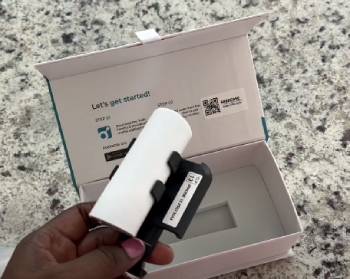
- Four-Hormone Tracking: Tests LH, E3G, PdG, and FSH on one strip. I got a full picture of my cycle.
- Real Numerical Values: Shows exact hormone levels, not just “High” or “Low.” My LH peak at 40 mIU/mL was clear.
- PCOS-Friendly: Ideal for irregular cycles. It caught my ovulation despite 30-35 day cycles.
- User-Friendly App: Clear charts and notifications. I loved seeing my hormone trends daily.
- Fast Results: 10 minutes per test. I got quick insights each morning.
- Shareable Data: Easy to share with doctors. My OB used my charts for treatment.
Accurate for TTC: Helped me conceive in two cycles. The PdG confirmation was reassuring. - Portable Design: Compact clip fits my iPhone. I tested anywhere easily.
- Environmentally Friendly: One strip for four hormones. I used fewer strips than Mira.
- Customer Support: Responsive team. They fixed a faulty clip fast.
Cons of Inito
- iPhone-Only: No Android support. My friend with a Samsung couldn’t use it.
- Recurring Costs: $49 for 15 strips adds up. I spent $98 monthly for long cycles.
- Camera Dependency: Relies on phone camera quality. My old iPhone 7 struggled once.
- Qualitative Labels: “High” or “Peak” felt vague alongside numbers. I preferred raw data.
- Setup Fiddly: Clipping to phone takes practice. I fumbled the first few times.
- Strip Usage: Needed 12-15 strips per cycle. My 35-day cycle burned through them.
- No Contraception Use: Not for avoiding pregnancy. I used condoms separately.
- Learning Required: Understanding hormone trends takes time. I studied the app’s guides.
- Occasional Glitches: App crashed twice. I had to restart my phone.
- Expensive for Some: $149 starter kit isn’t cheap. I budgeted carefully.
Pros of Mira
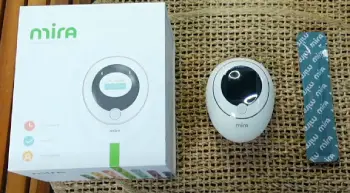
- Lab-Grade Accuracy: 99% accurate for LH, E3G, PdG. My results matched my OB’s blood tests.
- Three-Hormone Tracking: Tests LH, E3G, PdG (FSH optional). I tracked my full fertile window.
- AI-Powered App: Analyzes hormone patterns. It predicted my ovulation on day 14 once.
- PCOS and Irregular Cycles: Works for complex cycles. My PCOS didn’t faze it.
- Bluetooth Syncing: Results transfer seamlessly. I checked charts on my phone instantly.
- Detailed Hormone Curves: Shows numeric values and trends. My estrogen rise was clear at 200 ng/mL.
- Doctor-Friendly Data: Shareable charts helped my clinic. They adjusted my meds based on it.
- Sleek Design: Stylish analyzer and pouch. I felt fancy using it.
- Customizable Testing: App suggests test frequency. I tested twice daily near ovulation.
- FSA/HSA Eligible: Reimbursable for some. I saved $50 with my HSA.
Cons of Mira
- High Cost: $199 starter kit, $64.99 for 20 wands. I spent $130 monthly.
- Long Test Time: 16-21 minutes per test. I had to plan my mornings.
- Multiple Wands: Separate wands for PdG and FSH. I juggled two types.
- App Bugs: Syncing failed occasionally. I rebooted the app thrice.
- No Contraception: Not for avoiding pregnancy. I used other methods.
- Wand Costs: $3.25 per wand stung. My long cycles ate my budget.
- Complex for Beginners: Hormone data overwhelmed me initially. I read manuals twice.
- Android/iOS Only: App-based, no manual option. My friend without a smartphone struggled.
- Fragile Wands: Dropped one and it broke. I lost $6.50.
- Battery Life: Analyzer needs charging monthly. I forgot once mid-cycle.
Pros and Cons of Kegg
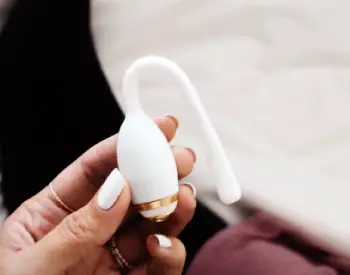
- One-Time Cost: $279, no recurring fees. I saved money long-term.
- Fast Readings: 2 minutes per test. I tested while brushing my teeth.
- Non-Invasive Feel: Small device, easy to insert. I barely noticed it.
- Kegel Support: Guides pelvic floor exercises. My pelvic health improved.
- Cervical Mucus Tracking: Detects fertile window via fluid changes. I saw my 4-day window clearly.
- App Simplicity: Colorful, easy-to-read graphs. I checked trends in seconds.
- No Urine Tests: No strips or cups. I loved skipping urine collection.
- Discreet Packaging: Plain box delivery. My neighbors didn’t suspect a thing.
- Regular Cycle Friendly: Works well for 21-45 day cycles. My friend with regular cycles loved it.
- Pregnancy Guarantee: 12-month refund if no pregnancy. I felt reassured.
Cons of Kegg
- No Hormone Data: Lacks specific hormone values. I missed Inito’s numbers.
- Vaginal Insertion: Not for everyone. My sister found it invasive.
- Timing Strict: Must test in a 2-hour window daily. I forgot once and missed data.
- Less Accurate: Cervical mucus less precise than hormones. I cross-checked with OPKs.
- PCOS Limitations: Not tested for PCOS. My irregular cycles needed extra tracking.
- Endometriosis Warning: Not ideal for endometriosis. I consulted my doctor first.
- Vaginal Interferences: Semen, lubes affect readings. I tested before intercourse.
- App Dependency: No manual results. My phone’s battery died once mid-test.
- No Contraception: Not for avoiding pregnancy. I used backup methods.
Limited Insights: Less data than Inito/Mira. I wanted more specifics.
Also Read: My Thoughts On Opill Daily Oral Contraceptive
Comparing Inito, Mira, and Kegg in Depth
- Inito Vs. Clearblue Fertility Monitor
Clearblue’s Fertility Monitor, at $91, tracks LH and E3G via urine tests, showing “Low,” “High,” or “Peak” fertility.
I tried it for a cycle, and its 99% accuracy was solid, but it lacked PdG or FSH data, so I missed ovulation confirmation.
Inito’s four-hormone testing gave me numeric values (e.g., PdG at 14 ug/mL), which Clearblue’s qualitative results couldn’t match.
Clearblue’s $55.70 refills were cheaper than Inito’s $49 for 15 strips, but Inito’s detailed charts helped my doctor more.
For PCOS, Inito’s comprehensive data won out.
- Inito Vs. Tempdrop
Tempdrop, a $159 wearable BBT thermometer, tracks temperature overnight.
I wore it for a month, but BBT only confirmed ovulation after it happened, not predicting it like Inito’s LH and E3G tests.
Tempdrop’s $4.49 monthly app fee annoyed me, while Inito’s free app showed real-time hormone curves.
Tempdrop was non-invasive but less precise for my irregular cycles.
Inito’s urine tests gave me actionable data for timing intercourse, making it my choice for TTC.
- Mira Vs. Proov
Proov, at $40 for 10 strips, tests PdG to confirm ovulation.
I used it for a cycle, and it was cheaper but only tracked one hormone, missing the fertile window’s start.
Mira’s LH, E3G, and PdG wands gave me a full cycle view, with AI predicting ovulation on day 14.
Proov’s simplicity suited regular cycles, but Mira’s lab-grade accuracy and hormone curves were better for my PCOS-driven irregular cycles.
- Mira Vs. OvuCore
OvuCore, a $200 vaginal monitor, measures core temperature overnight.
I tested it for two cycles, and it confirmed ovulation via temperature shifts but didn’t predict my fertile window like Mira’s LH and E3G wands.
OvuCore’s one-time cost was nice, but Mira’s detailed hormone data (e.g., LH at 57 mIU/mL) helped me time intercourse better.
For irregular cycles, Mira’s comprehensive tracking was more effective.
- Kegg Vs. Easy@Home
Easy@Home’s $20 ovulation test strips track LH surges.
I used them for a month, and they were dirt-cheap but only showed a line for LH, missing estrogen or PdG.
Kegg’s cervical mucus tracking gave me a 4-day fertile window, while Easy@Home just flagged one peak day.
Kegg’s app was more user-friendly than manually reading strips, and its one-time cost beat Easy@Home’s recurring $20.
Kegg felt more reliable for my needs.
Also Read: My Experience With Wondfo Pregnancy Test
Health Benefits of Fertility Trackers
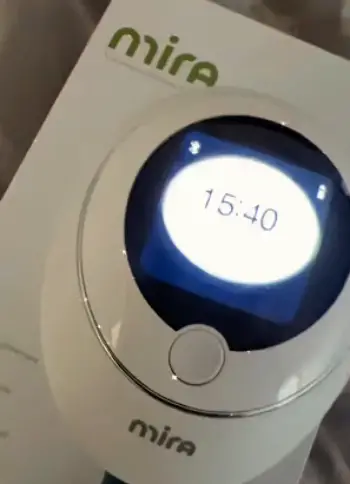
Using Inito, Mira, and Kegg empowered me beyond just conception.
Inito and Mira’s hormone data helped me understand my PCOS, revealing low PdG levels that prompted progesterone supplements.
This knowledge reduced my stress, as I felt in control of my cycle.
Kegg’s Kegel feature strengthened my pelvic floor, easing mild incontinence from past pregnancies.
All three trackers’ apps let me track mood and acne alongside cycles, linking hormonal dips to my energy slumps.
The data-driven insights boosted my mental health, making TTC feel less like a gamble.
Inito and Mira’s shareable charts improved my doctor visits, leading to tailored treatments.
Kegg’s simplicity suited my busy mornings, reducing routine stress.
Each device gave me confidence, turning a confusing process into an informed journey.
How to Choose the Right Tracker for You
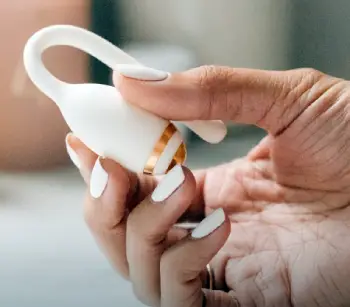
Picking between Inito, Mira, and Kegg depends on your needs.
If you have PCOS or irregular cycles, Inito or Mira’s hormone tracking is ideal.
Inito’s four-hormone strips and lower cost ($149 vs. $199) make it great for budget-conscious users with iPhones.
Mira’s lab-grade AI and iOS/Android compatibility suit those wanting detailed data and flexibility, despite higher wand costs.
Kegg’s $279 one-time price and quick, urine-free tests are perfect for regular cycles and those comfortable with vaginal insertion.
I weighed accuracy, cost, and ease to choose Inito for its comprehensive data and affordability.
Frequently Asked Questions (FAQs)
Mira’s lab-grade accuracy and iOS/Android support edge out Inito’s iPhone-only limit, but Inito’s four-hormone strip is more cost-effective.
Mira claims 99% accuracy for LH, E3G, PdG, backed by studies. Inito’s similar but unvalidated. Kegg’s mucus-based tracking is less precise.
Kegg tracks cervical mucus in 2 minutes with no recurring costs. Mira tests urine hormones (LH, E3G, PdG) for detailed data but requires pricey wands.
Yes, for irregular cycles or PCOS. Its four-hormone tracking and clear app helped me conceive in two cycles for $149.
Final Thoughts
Inito, Mira, and Kegg each offer unique ways to track your fertility, making TTC less stressful.
Inito and Mira give detailed hormone data, ideal for irregular cycles, while Kegg’s simple, one-time purchase suits regular cycles.
Choose based on your budget, cycle type, and comfort level.
Get one now and take control of your fertility journey with confidence!

